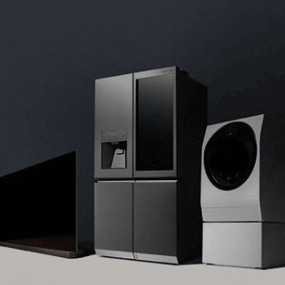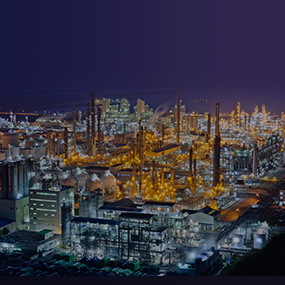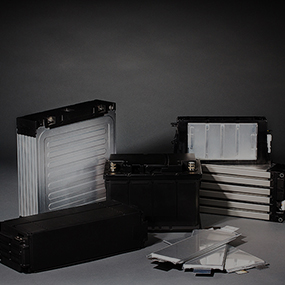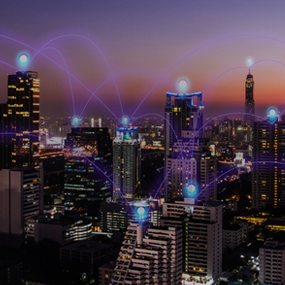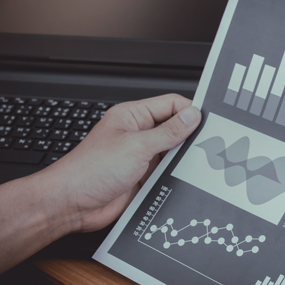LG Chem to Increase Battery Materials by More than 12 Folds to Post 60 Trillion KRW by 2030
2022.02.09■ Plans to increase revenue by more than double in the next nine years focusing on eco-friendly materials, battery materials, and new drugs
□ (Eco-friendly materials: Revenue 1.4 trillion in ‘21 → 8 trillion by ‘30) Leading the Great Reset for the industry based on the three major axes of mechanical and chemical recycling, biodegradation and bio, and renewable energy materials
□ (Battery materials: 1.7→21 trillion) Leap into the world’s best comprehensive battery material company by increasing global production of cathode materials/separator/CNT, entry into the battery recycle business, etc.
□ (Global new drug: 1 trillion) Launching innovative new global drugs by accelerating projects entering global clinical stages such as gout (completed phase 2 trials in the US), rare obesity (currently in phase 1 trials in the US), NASH (currently in phase 1 in the US), etc.
■ Declaration to fast-forward the carbon-neutral growth goal by 20 years and achieve net-zero by 2050
□ Pursuing the implementation of innovative processes, shift toward eco-friendly raw materials and fuel, expanded use of renewable energy, etc.
□ Scheduled to complete implementation of LCA that quantitatively evaluates the environmental impact of all products domestically and internationally by next year
■ Chief Executive Officer Hak Cheol Shin,
□ “The growth strategy pursued by LG Chem is to use the global industrial Great Reset to preoccupy the blue ocean,”
□ “We will shift our main axis of our business as a global science company focusing on eco-friendly businesses, battery materials, and new drugs by 2030 and grow without wavering in any business environment”
LG Chem announced its blue ocean shift strategy to post 60 trillion won in revenue, which is more than double of the current, by 2030, while increasing the proportion of eco-friendly high-value new businesses by more than half of the total.
The 60 trillion KRW revenue goal set for 2030 is a number planned only with direct businesses of LG Chem excluding revenue from its subsidiary, LG Energy Solution.
Chief Executive Officer Hak Cheol Shin stated in an investor seminar held live online on the 8th that revenue will grow from 26 trillion KRW in 2021 to 60 trillion by 2030, which is more than a 130% increase.
He also announced plans to raise revenue of the company’s three major new businesses in eco-friendly materials, battery materials, and new drugs by more than 10-fold from 3 trillion to 30 trillion KRW.
Investments in R&D related to this will also be accelerated. It also plans to hire more than 500 employees in R&D this year to procure about 3,300 employees, while also investing 1 trillion KRW in R&D, which is 35% higher than that of the previous year.
Chief Executive Officer Shin stated, “LG Chem has diversified its business portfolio ranging from the battery business to advanced materials and bio businesses including IT materials and battery materials depending on the flow of industries and achieved revenue growth of more than 10 times over the past 20 years.”
He added, “The Great Reset of the industry prompted by the current climate crisis, digital transformation, and post-pandemic era will also serve as a great opportunity for LG Chem’s leap into the ‘Top Global Science Company.’”
■ Expanding the proportion of ESG-based high-value new businesses such as eco-friendly materials, battery materials, and global new drugs
LG Chem specified its plans for fostering the three new growth engines for continuous growth without wavering in the age of huge changes.
1. Eco-friendly Materials: Achieve 8 trillion won in sales with recycled, bio, energy transition materials, etc.
Plans are to increase revenue of eco-friendly sustainability businesses focusing on recycled, biodegradable and bio, renewable energy (energy transition) materials businesses by more than six times from 1.4 trillion KRW to 8 trillion KRW by ‘30, while leading the global chemical industry that is rapidly converting to the low-carbon economy.
① Recycled Materials
In order to pioneer the recycled plastic market that has exhibited explosive growth mainly led by global IT companies, LG Chem is concentrating on ▲procuring recycled raw materials, ▲improving plastic properties, and ▲early commercialization of chemical recycling.
LG Chem plans to expand its partnerships with Korea’s largest e-commerce company Coupang and household appliance companies such as LG Electronics to procure recyclable raw materials.
Furthermore, after becoming the first in the world in commercial production of white colors, which is a difficult color to produce using recycled plastics, it is also reinforcing R&D to manufacture products with the same properties as virgin plastic such as beginning development of transparent products.
It is pursuing technological commercialization with Mura of the United Kingdom as it targets the chemical recycling market, and it has also set its goal for constructing the nation’s first supercritical pyrolysis oil plant with annual production of 20,000 tons by 2024.
*Chemical recycling: Technology that breaks down used plastic with high temperature and high pressure to utilize as raw materials for producing new plastics, and it is more difficult and requires higher initial investments compared to mechanical recycling that pulverizes waste plastics, which are then cleaned, sorted and mixed.
② Biodegradable / Bio Materials
Biodegradable and bio material plastics can radically decrease carbon emissions, while also solving plastic waste issues, and therefore, it is expected that demand will grow by more than 20% annually.
The first shipment of super absorbent polymers (SAP) applying plant-derived bio materials such as waste cooking oil was made in August of last year, and plans are in place to construct a 75,000-ton PLA (Poly Lactic Acid; biodegradable bio plastic) plant in the US by 2025 through a joint venture with ADM, an American grain company, to begin integrated mass production ranging from raw materials to final products.
For the biodegradable resin, PBAT (Poly Butylene Adipate-co-Terephthalate), which decomposes quickly in nature, a plant with an annual yield of 50,000 tons is being constructed slated for commercial production in 2024. PLH, a new biodegradable material that was developed for the first time in the world, is being scaled-up for commercialization.
③ Energy Transition (Renewable Energy) Materials
With the rapid growth of the renewable energy market, the POE (Poly Olefin Elastomer) market for solar power panel films is expected to grow at a pace upwards of 30% annually until 2025.
LG Chem began works to increase 100,000 tons for solar power POE production since 2021, and mass production is scheduled for 2023. Once this extension is completed, it will procure the world’s second largest production capacity at 380,000 tons.
POE is a high-value synthetic resin having the properties of both rubber and plastic using LG Chem’s unique metallocene catalyst, and plans are to further reinforce properties optimized for solar power panel films to maintain its superiority in the solar power market.
In addition to this, development of catalysts for making plastics using carbon dioxide as its raw material for carbon reductions is also being conducted.
2. Battery Materials: Leap into the world’s top comprehensive battery materials company with revenue of 21 trillion KRW through a lineup of cathode materials, separators, etc.
LG Chem plans to increase revenue of its battery materials business by 12 folds from 1.7 trillion KRW in 2021 to 21 trillion KRW by 2030, while fostering it as a highly profitable business that creates double-digit operating profits.
Once the growth of its subsidiary LG Energy Solution and procurement of external clients are attained, it is expected that the revenue goal will become even higher.
① Cathode materials business in full swing based on high-nickel product technological capacities and metal sourcing competitiveness
LG Chem is planning to put the cathode material business in full-swing based on its metal sourcing competitiveness and technologies that it accumulated over long periods such as the mass production of NCM (nickel, cobalt, manganese) cathode materials for the first time in the world back in 2006.
LG Chem holds the world’s best technologies for high-precision and long-life high-nickel. Based on this, it plans to expand the proportion of high-nickel products, containing more than 80% of nickel, to 90% by 2026.
The Company also possesses the world’s highest productivity in the calcination, which is the core of the cathode material process.
Plans are to expand partners to global companies, in addition to the existing Chinese mining companies, to ensure stably supply of metals.
LG Chem has procured stakes in Li-Cycle, the largest recycling company in North America, to construct a recycled materials supply chain, and it is also discussing cooperation plans with a number of other companies as well.
Based on such competitiveness, it will begin full-fledged mass production of cylindrical and pouch products from this year, while expanding its production capacities to 260,000 tons by 2026 through its global four-axis production system in Korea, China, Europe and USA.
② Fostering the separator business in earnest based on source technologies such as Safety Reinforced Separator (SRS)
LG Chem will begin strengthening its competitiveness in the separator business based on source technologies such as SRS that it proprietarily developed.
In late last year, it pursued the establishment of a joint venture with Toray, a company possessing distinguished separator fabric technologies, in Hungary, while acquiring the coating business of LG Electronics having the world’s fastest coating technology.
LG Chem plans to additionally increase production capacities in Europe and expand global production bases such as in the US, while diversifying clients to foster its separator business.
③ Expanding additional battery materials business such as CNT, thermal adhesives, etc. and finding new battery materials
Aside from cathode materials and separators, LG Chem will also actively foster additional battery materials such as CNT (Carbon Nano Tubes), thermal adhesives, anode binders, and BAS (Battery Assembly Solution).
Especially in the case of the CNT business, plans are to increase its current 1,700-ton production capacity by more than five times by 2026 to raise its market share.
Efforts to develop battery material technologies for improving battery performance and safety will also be accelerated.
‘Pure Silicon’ technologies that are currently under R&D are expected to make significant capacity improvements possible compared to existing anode materials.
‘Single crystal cathode materials’ that reduce gas emissions by 85% and ‘ceramic separator’ technologies with excellent resistance against high temperatures are expected to contribute significantly in strengthening battery safety.
Next-generation battery technologies such as solid battery materials, etc. are also under development, and reviews are being made while being open to various external opportunities as well.
3. New Drugs: Developing new global innovative drugs by accelerating global clinical studies in anti-cancer, diabetes, and metabolism
LG Chem plans to become reborn as a global pharmaceutical company possessing innovative new drugs by concentrating on anti-cancer, diabetes and metabolism.
LG Chem currently has 10 new global innovative drug pipelines in clinical stage 1 or higher stages, and it aims at procuring a total of 23 clinical stage pipelines by 2023 through the acceleration of R&D by applying AI, etc.
The new gout treatment drug that successfully completed clinical stage 2 trials in the US last year exhibited a high possibility for success using its outstanding uric acid dropping effects compared to other drugs as its strong point.
This year, it plans to begin multi-national clinical stage 3 trials including the US and China.
Furthermore, the nonalcoholic steatohepatitis (NASH) drug that is currently in clinical stage 1 trials is expected to complete its phase 1 trials this year and begin clinical phase 2 trials.
Also, the world’s first orally administered rare obesity treatment (MC4R Agonist) exhibited good clinical results, and therefore, it is expected to successfully complete phase 1 trials this year.
■ Declaration to fast-forward the carbon-neutral growth goal by 20 years and achieve net-zero by 2050
In order to continue its sustainable growth into a global science company, LG Chem decided to fast-forward its past 2050 carbon neutrality growth goal by 20 years, and achieve net-zero by 2050.
*Net-zero: Where the net emissions found by adding carbon emissions and reduction becomes ‘0’
It must reduce the expected carbon emissions for 2050 by a total of 20 million tons to achieve this new goal. 20 million tons of carbon emissions is equivalent to the amount of carbon discharged by 8.3 million fossil fuel vehicles in one year, and this is a huge amount that can be offset by planting approximately 140 million pine trees.
In order to reduce carbon emissions, LG Chem is actively pursuing the implementation of innovative processes, shift toward eco-friendly raw materials and fuels, and expanding the use of renewable energy. For this, plans are in place to complete LCA (Life Cycle Assessment), which quantitatively evaluates environmental impact created from raw materials to manufacturing, for all of its products, both domestically and internationally, by 2023.
Chief Executive Office Hak Cheol Shin explained, “The growth strategy pursued by LG Chem is to adopt the global industrial Great Reset as an opportunity not only for R&D and strategic investment, but all internal and external growth opportunities including M&As to preoccupy the blue ocean.”
He added, “We will shift the main axis of our business as a global science company focusing on eco-friendly businesses, battery materials, and new drugs by 2030 and grow without wavering in any business environment.”
